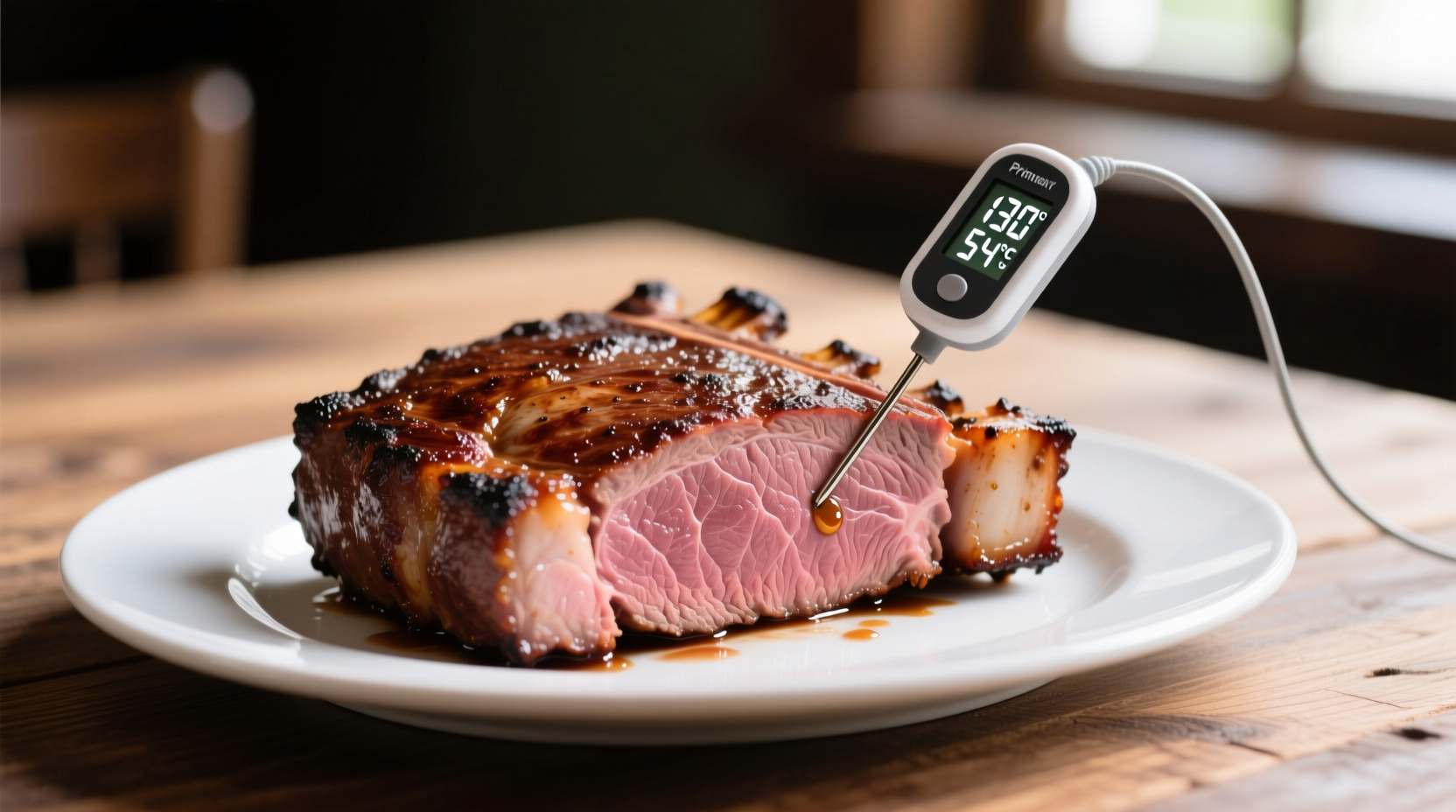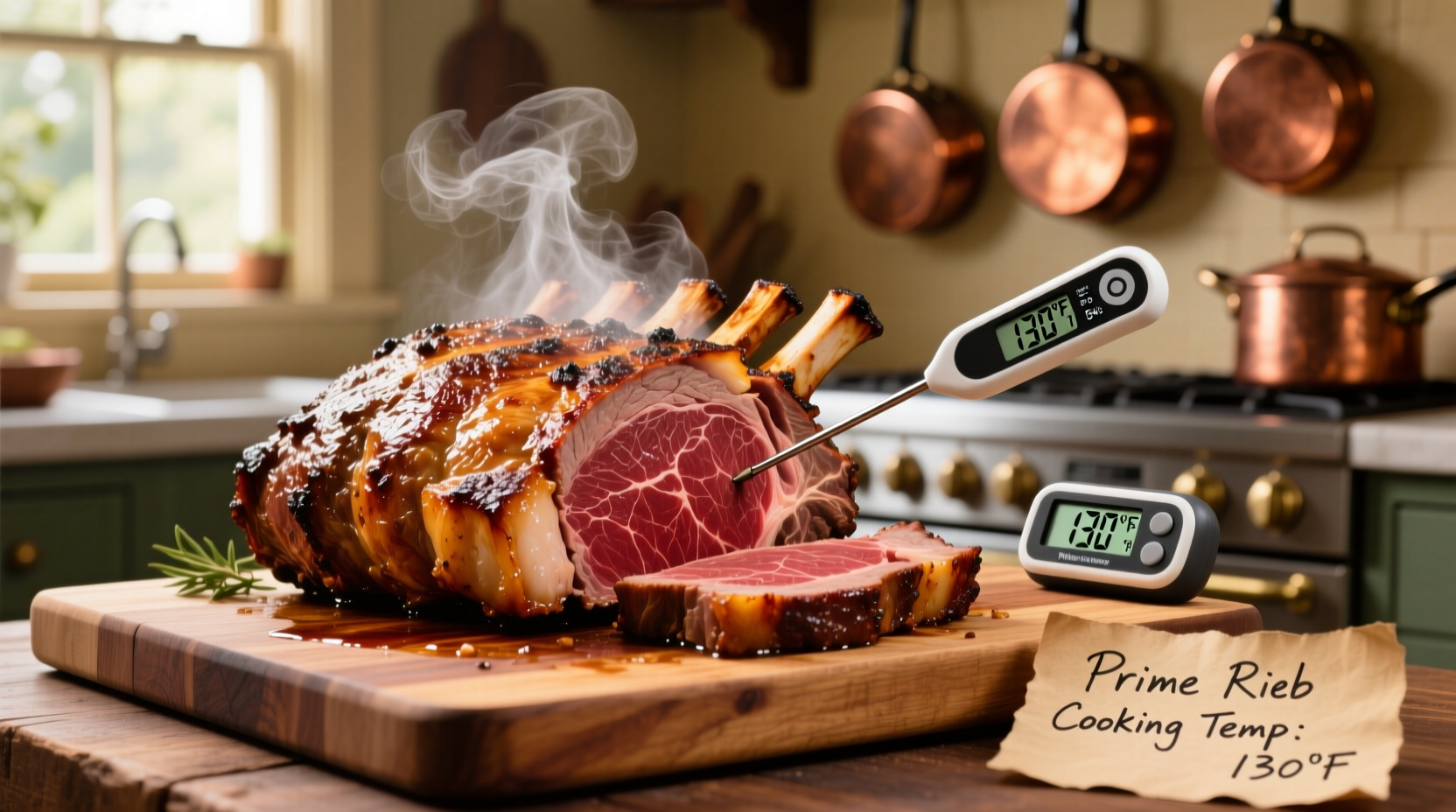The perfect internal temperature for prime rib is 130-135°F (54-57°C) for medium-rare, the most recommended doneness level. Remove the roast from the oven at 125-130°F as temperature will rise 5-10°F during resting. Rare requires 120-125°F, while medium needs 140-145°F.
Nothing says celebration quite like a perfectly cooked prime rib. But getting that ideal pink center with a beautifully seared crust can be intimidating if you're unsure about the critical temperature markers. As someone who's cooked hundreds of prime ribs in professional kitchens and home settings, I can tell you that temperature control is the single most important factor in achieving restaurant-quality results.
Why Temperature Matters More Than Time
Unlike many cooking methods where timing is primary, prime rib requires precise temperature monitoring. Each degree makes a significant difference in texture and juiciness. The USDA recommends a minimum internal temperature of 145°F for beef, but culinary professionals universally agree this results in overcooked prime rib that lacks the characteristic medium-rare pink center most diners prefer.
| Doneness Level | Remove from Oven | Final Internal Temp | Color & Texture |
|---|---|---|---|
| Rare | 115-120°F (46-49°C) | 120-125°F (49-52°C) | Bright red center, soft texture |
| Medium-rare (Recommended) | 125-130°F (52-54°C) | 130-135°F (54-57°C) | Warm red center, tender and juicy |
| Medium | 135-140°F (57-60°C) | 140-145°F (60-63°C) | Pink center, slightly firm |
| Medium-well | 145-150°F (63-66°C) | 150-155°F (66-68°C) | Slightly pink center, firm texture |
The Science Behind Perfect Prime Rib Temperature
Understanding the temperature journey of your prime rib helps prevent common mistakes. When removed from the oven, carryover cooking continues to raise the internal temperature by 5-10°F during the essential resting period. This phenomenon occurs because the outer portions of the meat, which are hotter, continue transferring heat toward the center.

Step-by-Step Temperature Guide
Preparation Phase
Bring your prime rib to room temperature (about 2 hours) before cooking. This ensures even heat distribution. Season generously and consider dry-brining overnight for optimal flavor penetration. The USDA Food Safety and Inspection Service confirms that proper seasoning and preparation enhances both safety and quality of cooked meats.
Cooking Process
Start with a high-heat sear at 450°F for 15-20 minutes to develop the crust, then reduce to 325°F until the internal temperature approaches your target. Use an accurate instant-read thermometer or leave-in probe thermometer for precise monitoring. The American Meat Science Association emphasizes that thermometer use is the only reliable method for determining meat doneness.
The Critical Resting Period
After removing from the oven, let your prime rib rest for 15-30 minutes (depending on size). This allows juices to redistribute throughout the meat. During this time, the temperature will continue to rise 5-10°F. Cutting too soon causes precious juices to escape onto your cutting board rather than remaining in the meat.
Contextual Considerations for Prime Rib Temperature
Certain situations may warrant temperature adjustments:
- Large roasts (bone-in): May require removing at slightly lower temperatures (5°F less) due to greater thermal mass
- Smaller portions: Experience less carryover cooking, so remove closer to target temperature
- Different cooking methods: Sous vide requires precise temperature control without carryover cooking concerns
- Personal preference: Some prefer slightly cooler medium-rare at 125°F final temperature
Professional Tips for Temperature Success
As a chef who's worked in Michelin-starred environments, here are my top temperature-related tips:
- Calibrate your thermometer regularly using ice water (32°F) or boiling water (212°F) tests
- Insert thermometer probes into the thickest part of the meat, away from bone
- Check temperature in multiple spots as ovens often have hot/cold zones
- Use a wireless probe thermometer for continuous monitoring without opening the oven
- Consider the roast's shape - irregular cuts require more frequent temperature checks
Troubleshooting Temperature Issues
Problem: Temperature stalled during cooking
Solution: This is normal during the "plateau" phase as moisture evaporates from the surface. Continue cooking until reaching target temperature.
Problem: Temperature rose too high during resting
Solution: Next time, remove the roast 5°F earlier from the oven. Insulated resting (like tenting loosely with foil) increases carryover cooking.
Problem: Uneven doneness throughout the roast
Solution: This typically indicates inconsistent oven temperature. Rotate the roast halfway through cooking and use an oven thermometer to verify accuracy.











 浙公网安备
33010002000092号
浙公网安备
33010002000092号 浙B2-20120091-4
浙B2-20120091-4